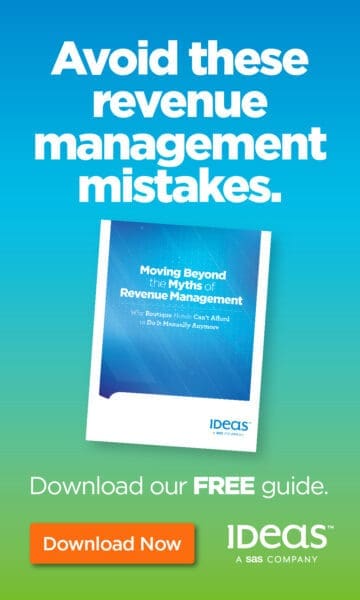 “Work vacations” might seem like a misnomer, but one of the outcomes of the rise in popularity of remote work is a realignment of the boundaries between the personal and professional. While this remote work shift certainly hasn’t killed the traditional workplace model, it has called into question the actual necessity of in-person work. Many employees split time between their home offices and their employers’ designated workspaces, while others transitioned to fully remote schedules.
“Work vacations” might seem like a misnomer, but one of the outcomes of the rise in popularity of remote work is a realignment of the boundaries between the personal and professional. While this remote work shift certainly hasn’t killed the traditional workplace model, it has called into question the actual necessity of in-person work. Many employees split time between their home offices and their employers’ designated workspaces, while others transitioned to fully remote schedules.
Flexible work arrangements carry undeniable benefits and reinforce the continued value of in-person meetings and events. The hybridization of work and recreation is accelerating, specifically with the advent of business leisure travel — also known as “bleisure” travel. As the name suggests, it’s when workers supplement their business travels with personal time in the locations they are visiting. Employers can promote work-life balance, improve company morale, and allow workers to take vacations at no extra cost without increasing their carbon footprint.
Bleisure travel trends also are arriving at the perfect time for hospitality and airline companies, as inflation, tightened budgets, and public health concerns translate to precarious profit margins. Bleisure travel might be the perfect compromise: It provides the hospitality and travel industries with an additional revenue source and enables workers to get in some rec time without breaking the bank.
Bleisure travel: the pros and cons
While air travel and tourism contribute to climate change and potentially disrupt indigenous populations and local wildlife, sustainable tourism initiatives maximize the benefits of bleisure travel while limiting the negatives. Sustainable tourism development concentrates on creating value for the local community by improving infrastructure and creating opportunities for local businesses while preserving the community’s culture and ecology.
The economic climate has hospitality and travel companies competing for smaller shares of consumers’ discretionary spending budgets, so targeting bleisure travelers is the optimal revenue source to pursue. Business travel is a necessity, and employees rarely pay out of pocket for airline tickets and hotel stays. Companies prioritizing bleisure travelers gain opportunities to tap into larger spending pools and build customer affinity for their brands, increasing the likelihood of return visits once the financial landscape allows for more leisure spending.
That said, hotels and airlines have compensated for revenue loss from travel restrictions by furloughing and/or laying off employees and slashing ticket prices to entice those individuals still willing and able to travel. As a result, hospitality and airline businesses must allocate the necessary spending to rebuild their workforces in order to effectively service bleisure travelers. This isn’t an untenable situation; it just necessitates that leaders carefully balance spending with expected profits.
Both industries rely on a symbiotic relationship, as hotels host the travelers that airlines bring them. Bleisure travel promises to drive continued expansion of the travel industry. Before the pandemic, the International Air Transport Association predicted 7.8 billion air passengers by 2036 and 16 billion by 2050. In 2022, it predicted traveler numbers to hit 4 billion, exceeding 2019 levels. This exponential growth in air travel will not only provide rising revenues for airline companies, but also increase demand for hotel lodgings.
3 ways hospitality and airline companies can elevate their bleisure travel strategies
By understanding the pros and cons of bleisure travel and developing targeted solutions, hospitality and travel companies can capitalize on the movement while giving customers what they want. Here’s how:
1. Marketing messaging
You must understand the challenges the bleisure traveler faces and market the solutions you can provide them. Put yourself in the traveler’s shoes. What are their needs? A possible need could be Wi-Fi because having reliable internet is important when working from anywhere. So, get reliable Wi-Fi and market it. This supports customer acquisition by demonstrating how you can make their travel easier.
2. Bleisure travel incentives
Offer discounts to bleisure travelers for services like dining, flight class upgrades, and access to hotel or airport amenities (e.g., spas, wellness centers, etc.). Consider partnering with external brands specializing in services you don’t and can’t provide on-site, such as laundry or dry-cleaning services. Even small discounts or a single service-provider partnership increases your value proposition and enhances your appeal to consumers seeking the biggest bang for their buck.
3. Health and wellness products
Travel can be physically taxing, so integrating passive wellness products into your standard service offerings will give your customers one more reason to choose you over your competitors. For example, adding smart textiles like bio-responsive infrared fabrics into plane upholstery and hotel bedding, towels, and robes increases the comfort and well-being of customers, associating your brand with relaxation and refreshment.
The hospitality and airline sectors suffered significant financial damage in the last few years and need to replace lost revenue. It’s clear that bleisure travel trends are here to stay, and hospitality and airline companies can ill afford to ignore the new zeitgeist.
































